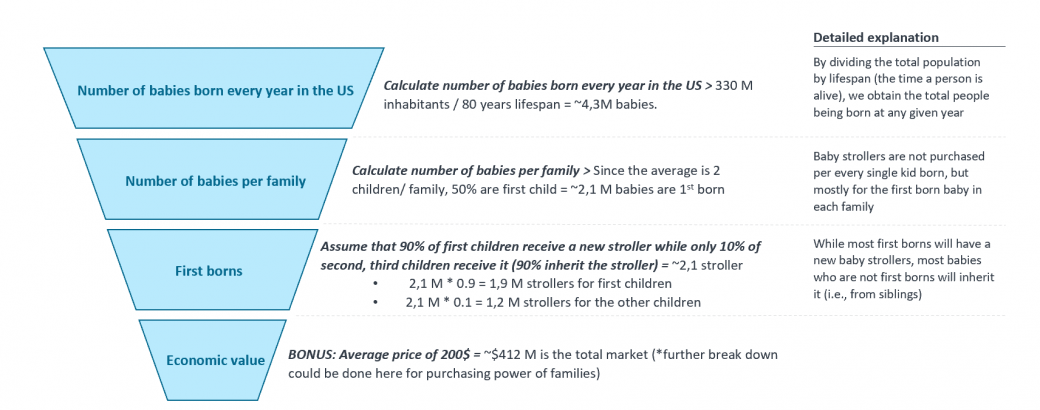Hi all,
Looking at practising some market sizing questions and I came across the question 'How would you help your colleagues determine the number of baby strollers that are sold yearly in the United States?".
When approaching market sizing, I have been using issue trees to break the problem down however in this case it appears like that may be a far more complicated approach. Instead, and as done by the solution, using a top-down approach to break the population into babies born etc seems like an easy and logical way to do it. I have attached this structure at the bottom.
Am I missing an easy way to use an issue tree for this solution or is it true that using this stacked method can be more effective than an issue tree in certain cases?
To rephrase my question, why has this article used this method and not an issue tree?
Thank you in advance for your help
















